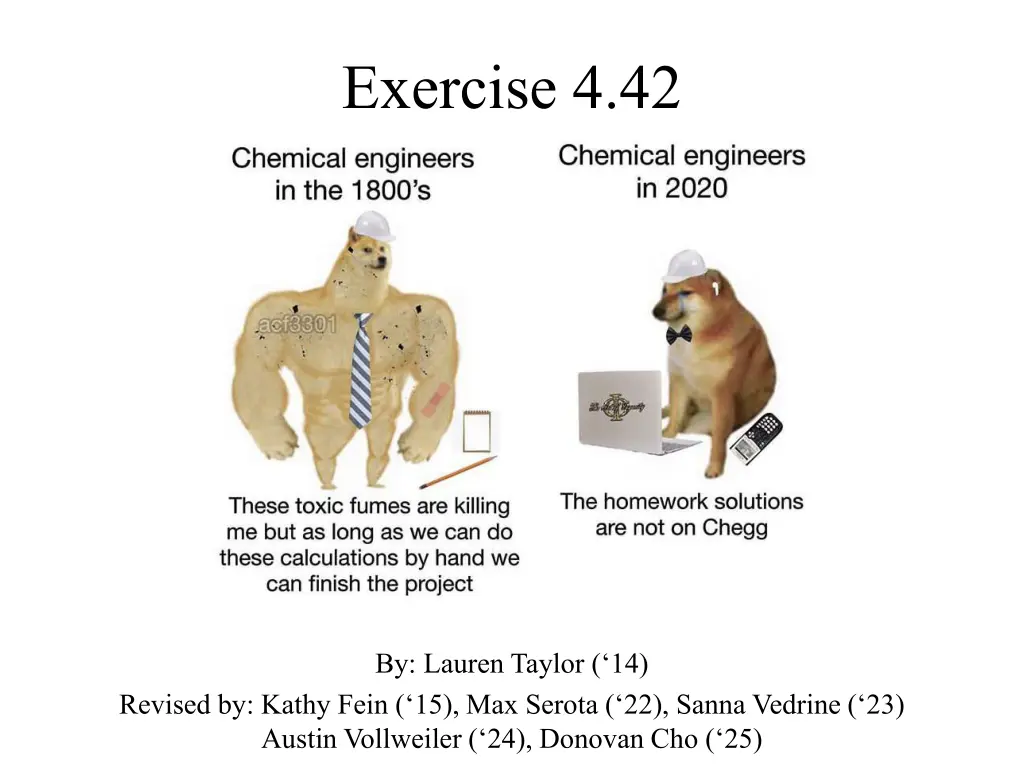
Optimizing Chemical Processes for Improved Efficiency and Extractability
Explore different approaches and operating temperature options to enhance the extraction process in chemical engineering. Analyze constant weight ratios of components and equilibrium lines to determine the best conditions for maximum yield. Visual aids and detailed explanations assist in understanding the optimization strategies.
Uploaded on | 0 Views
Download Presentation

Please find below an Image/Link to download the presentation.
The content on the website is provided AS IS for your information and personal use only. It may not be sold, licensed, or shared on other websites without obtaining consent from the author. If you encounter any issues during the download, it is possible that the publisher has removed the file from their server.
You are allowed to download the files provided on this website for personal or commercial use, subject to the condition that they are used lawfully. All files are the property of their respective owners.
The content on the website is provided AS IS for your information and personal use only. It may not be sold, licensed, or shared on other websites without obtaining consent from the author.
E N D
Presentation Transcript
Exercise 4.42 By: Lauren Taylor ( 14) Revised by: Kathy Fein ( 15), Max Serota ( 22), Sanna Vedrine ( 23) Austin Vollweiler ( 24), Donovan Cho ( 25)
Our Process cyclohexane with less X cyclohexane with X chemical process process chemical 99.9% X distillation column liquid-liquid absorber liquid-liquid extractor 99% H2O 1% X
Our Operating Temperature Options Which temperature should we use? equilibrium line at TB A equilibrium line at TA B C 0.1 Too much X in water equilibrium line at TC wt ratio of X to water Too much X in cyclohexane 0 0.1 0 wt ratio of X to cyclohexane TA < TB < TC
Approach 1: Constant wt ratio of X to Cyclohexane in cyclohexane with less X cyclohexane with X chemical process process chemical 99.9% X distillation column liquid-liquid absorber TA , TB , TC liquid-liquid extractor ? X/CHin 99% H2O 1% X
Approach 1: Constant wt ratio of X to Cyclohexane in equilibrium line at TB equilibrium line at TA 0.1 0.087 equilibrium line at TC wt ratio of X to water 0.05 0.032 0 0.05 0.1 0 wt ratio of X to cyclohexane TA < TB < TC
Approach 1: Constant wt ratio of X to Cyclohexane in equilibrium line at TB equilibrium line at TA 0.1 0.087 equilibrium line at TC wt ratio of X to water A has the best results! At TA water can extract more X from cyclohexane 0.05 0.032 0 0.05 0.1 0 wt ratio of X to cyclohexane TA < TB < TC
Approach 2: Constant Operating Line equilibrium line at TB A equilibrium line at TA B C 0.1 equilibrium line at TC wt ratio of X to water A has the best results! At TA more X is extracted from cyclohexane for the same operating conditions and number of stages 0 0.1 0 wt ratio of X to cyclohexane
Approach 3: Constant Initial and Final wt ratios cyclohexane with less X cyclohexane with X chemical process process chemical 99.9% X distillation column liquid-liquid absorber TA , TB , TC liquid-liquid extractor X/CHout X/CHin ? X/H2Oin 99% H2O 1% X
Approach 3: Constant Initial and Final wt ratios 0.107 X/H2Oin X/CHin X/CHout
Approach 3: Constant Initial and Final wt ratios 0.042 X/H2Oin X/CHin X/CHout
Which one uses less water? Which one gets more X into water? 0.107 0.042 X/H2Oin X/H2Oin X/CHin X/CHout X/CHin X/CHout C A
Which one uses less water? Which one gets more X into water? A has the best results! At TA the operating line is steeper, meaning for a given cyclohexane flow rate, the flow rate of water is smaller, and more X is extracted into the water 0.107 X/H2Oin X/CHin X/CHout A
Takeaways There are multiple ways to approach a problem Use methods that make sense to you Check with a different method if unsure Breakdown a problem into smaller steps
